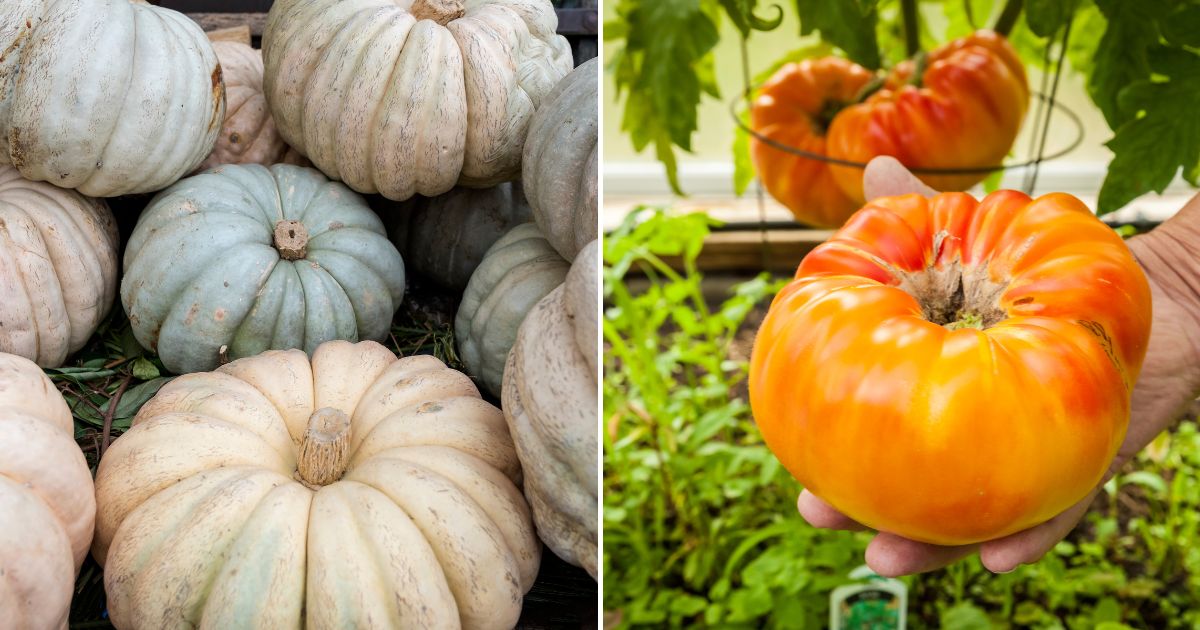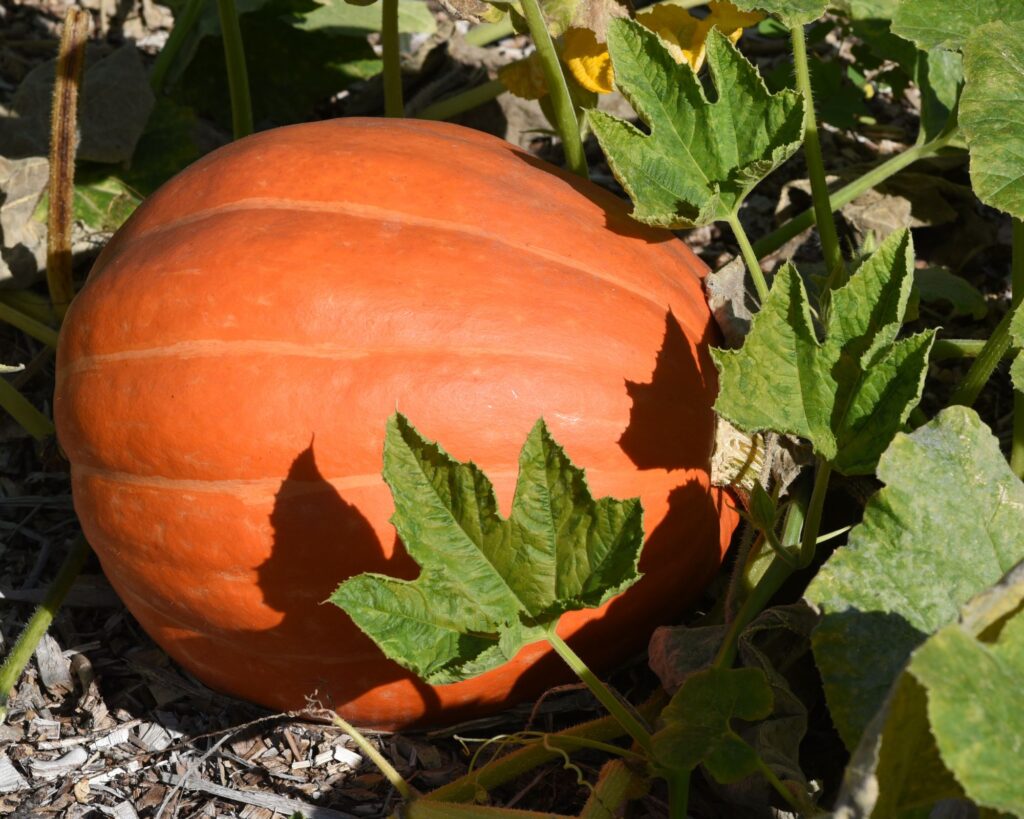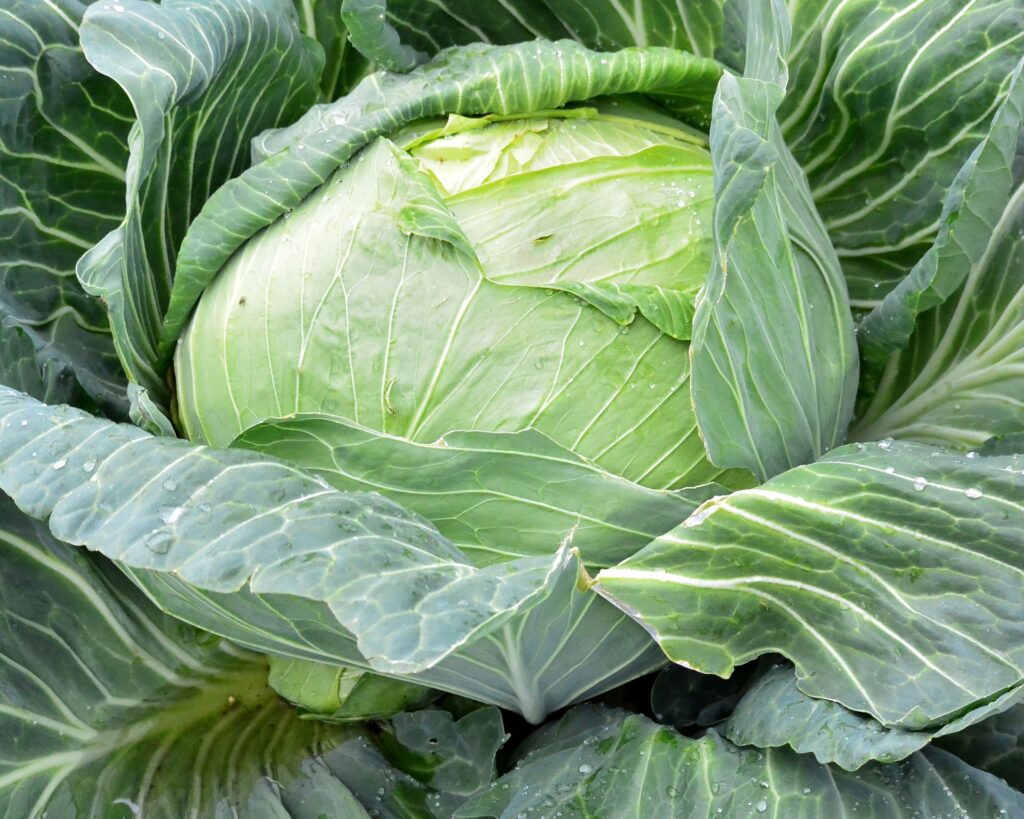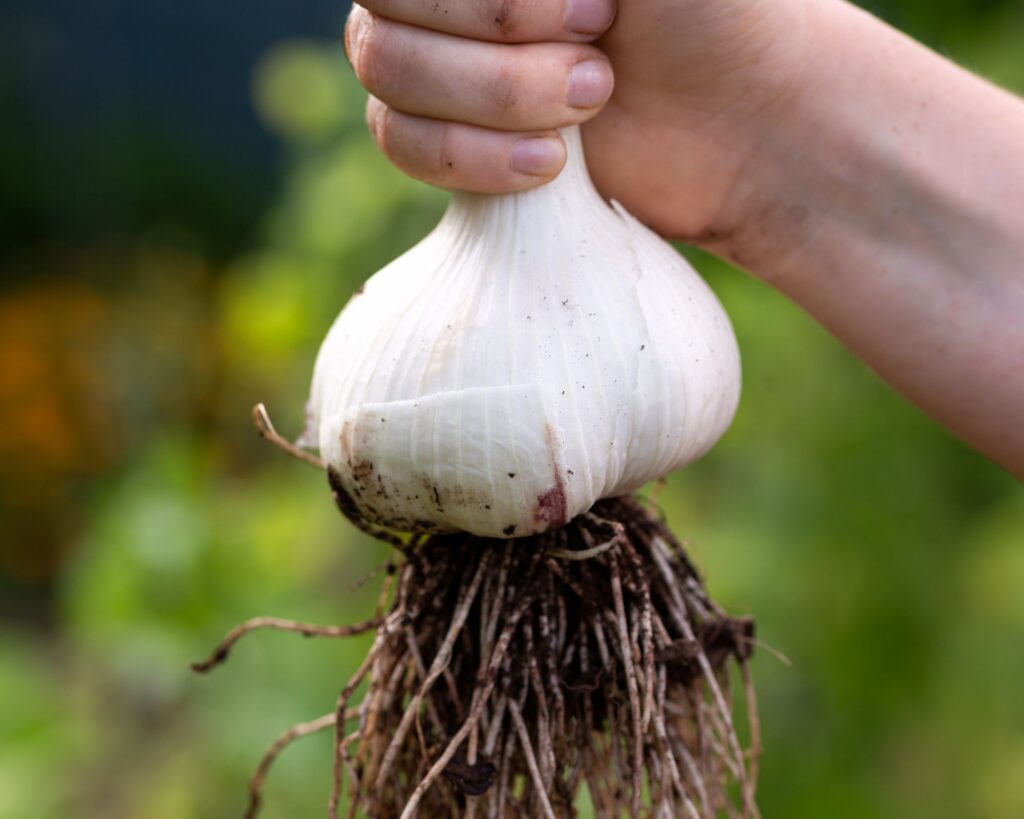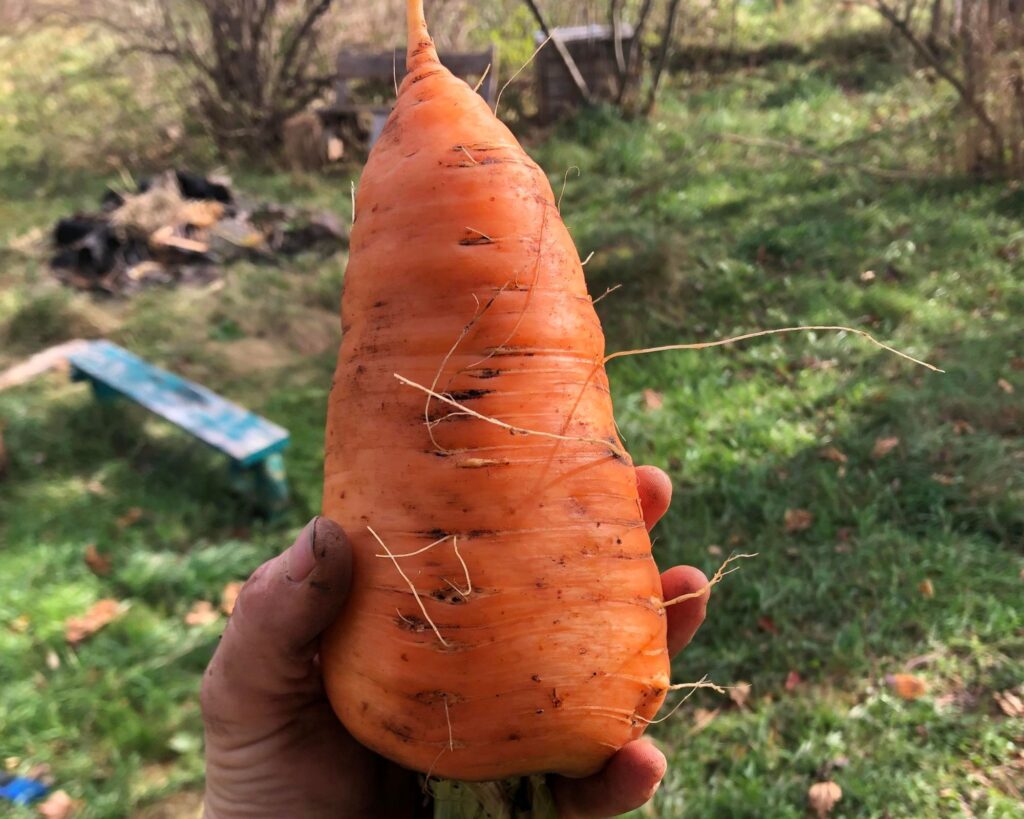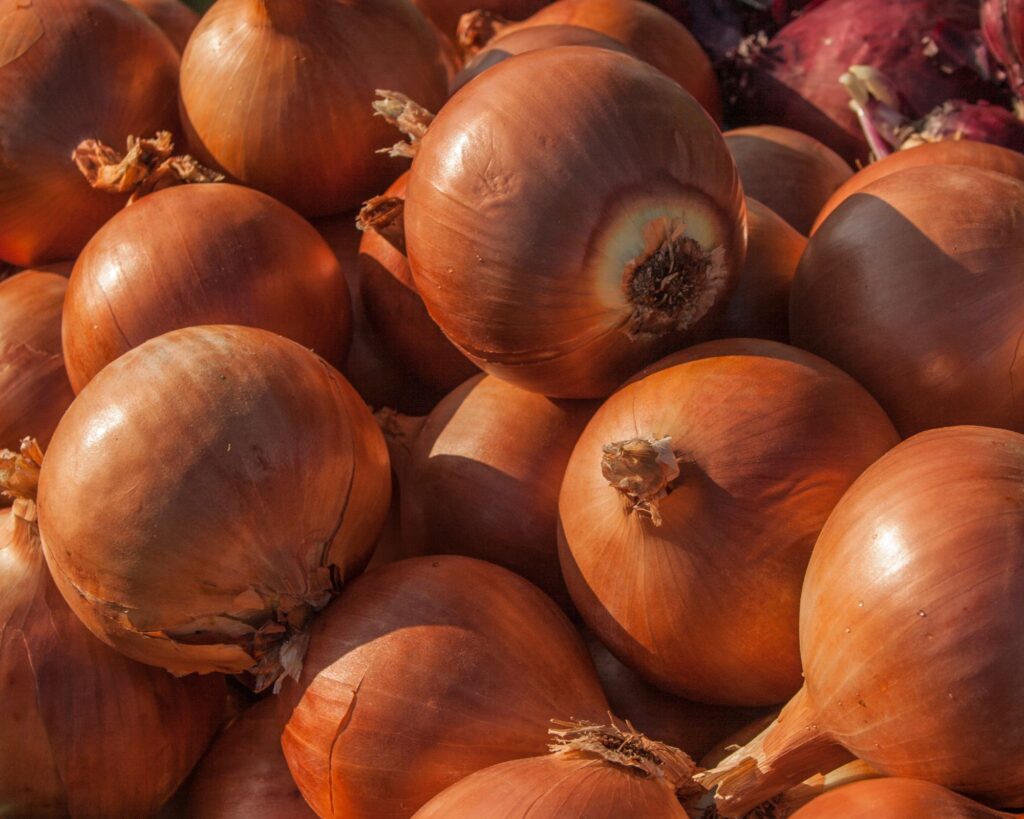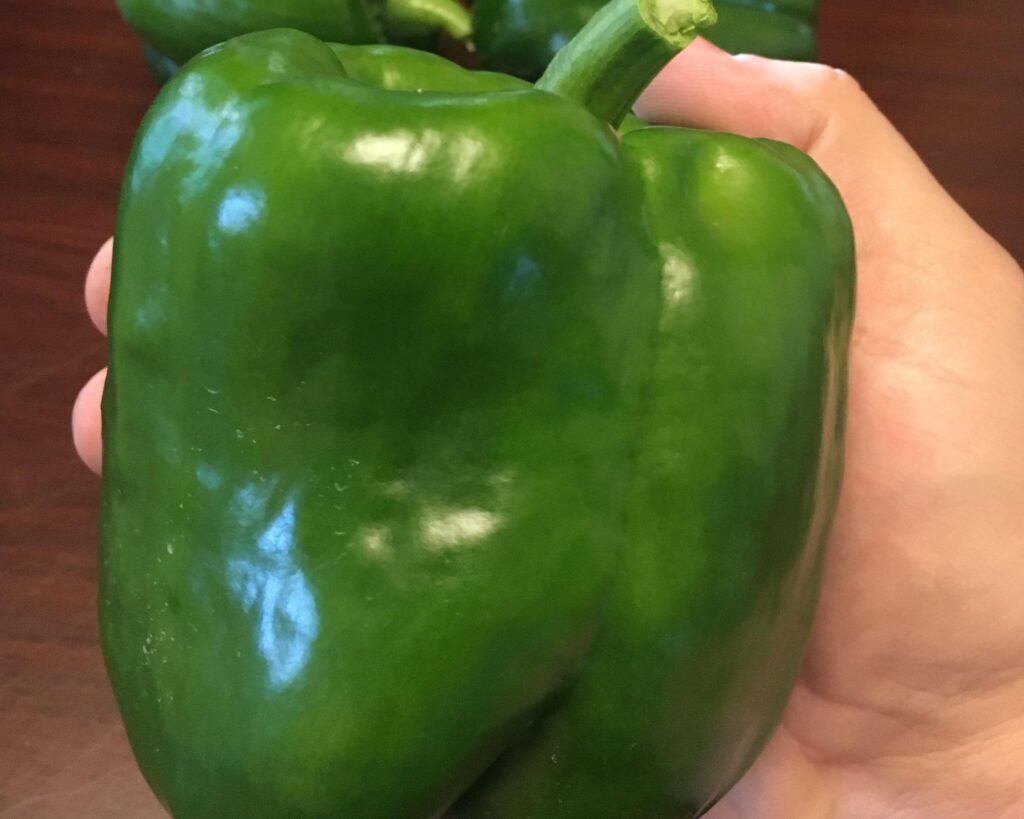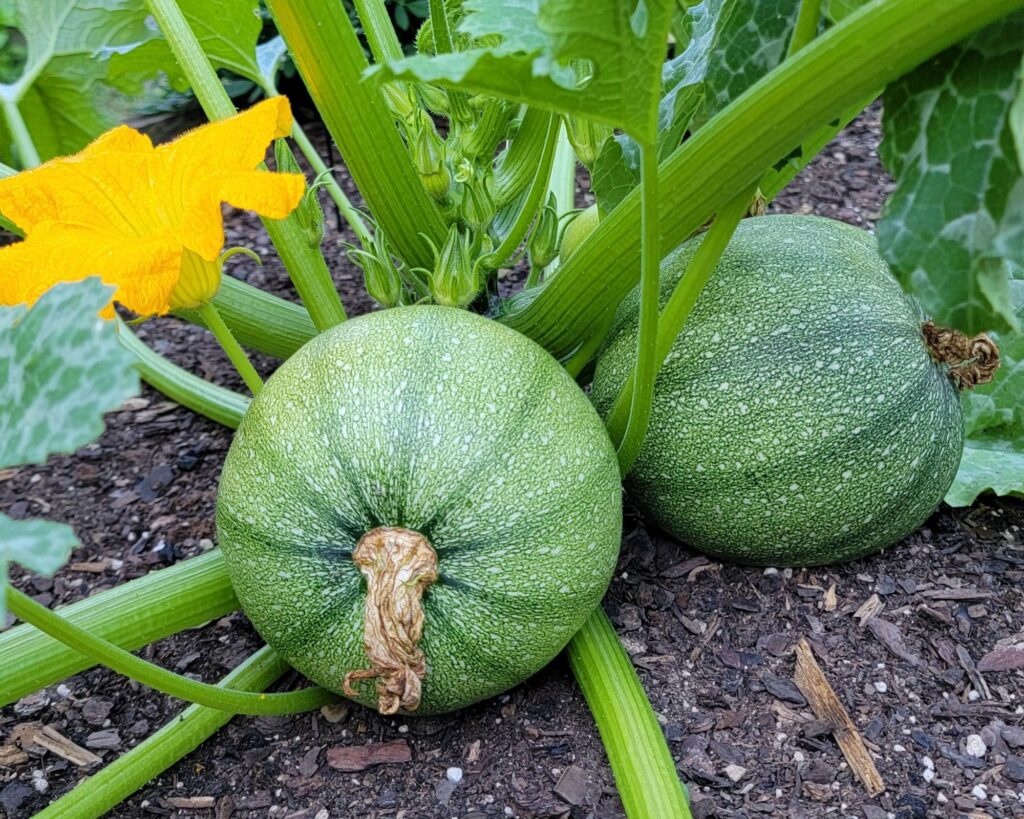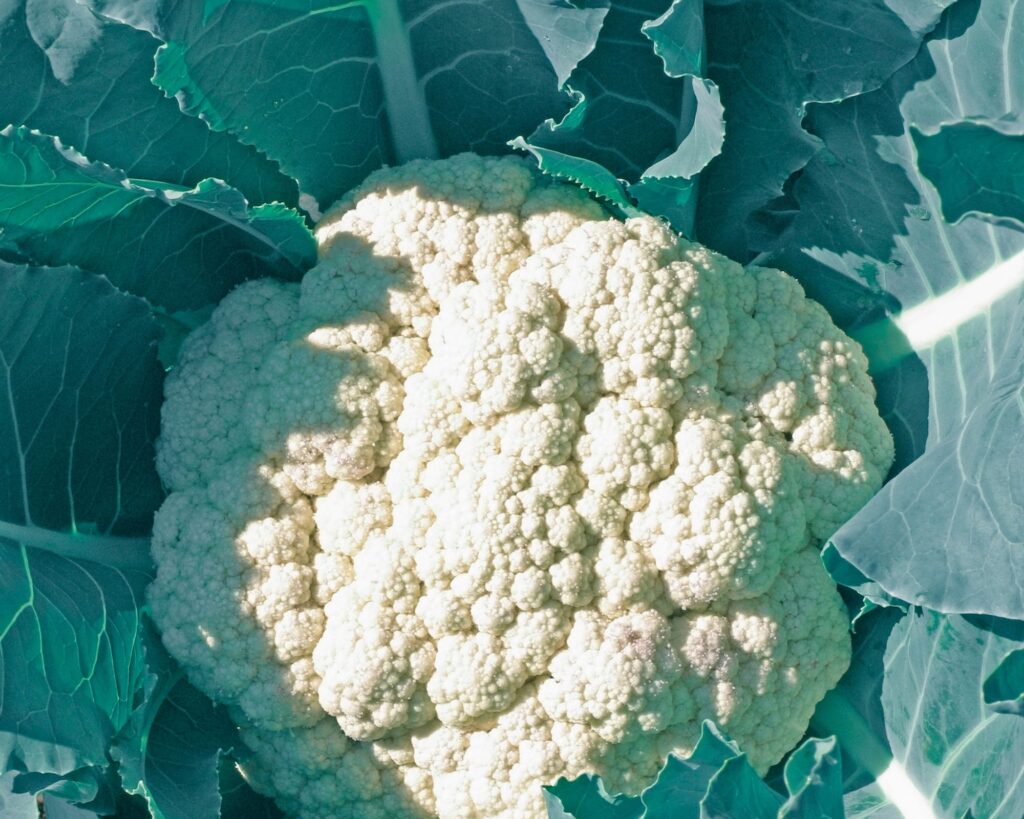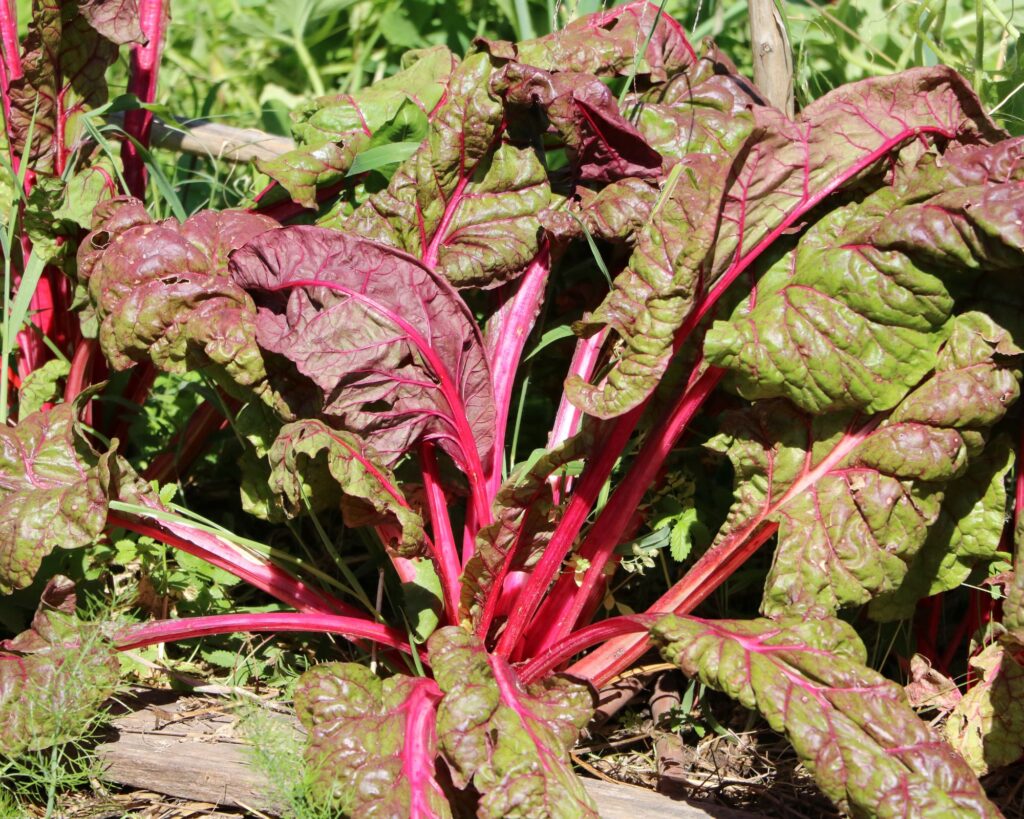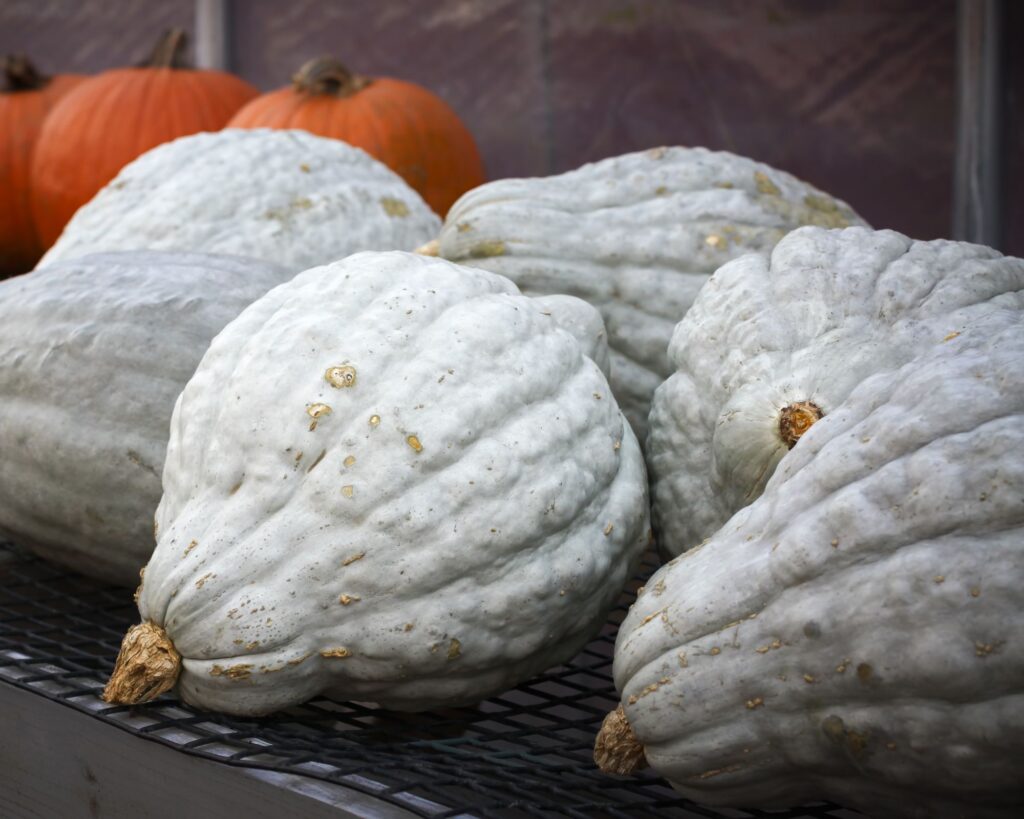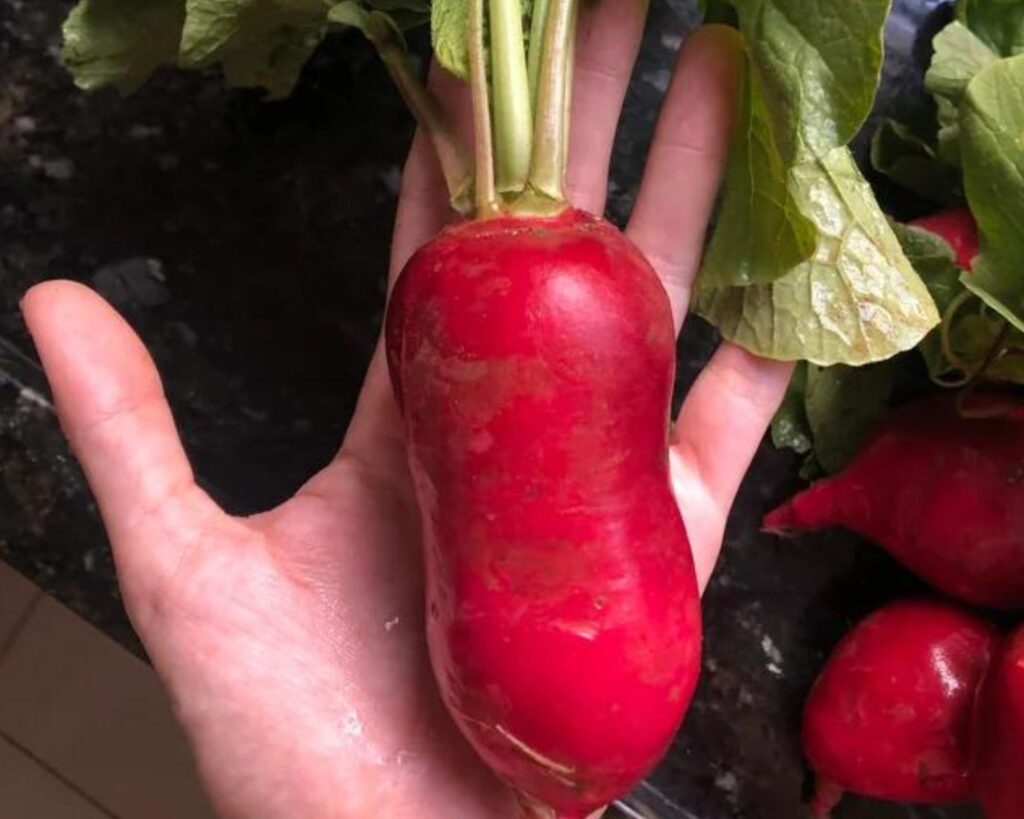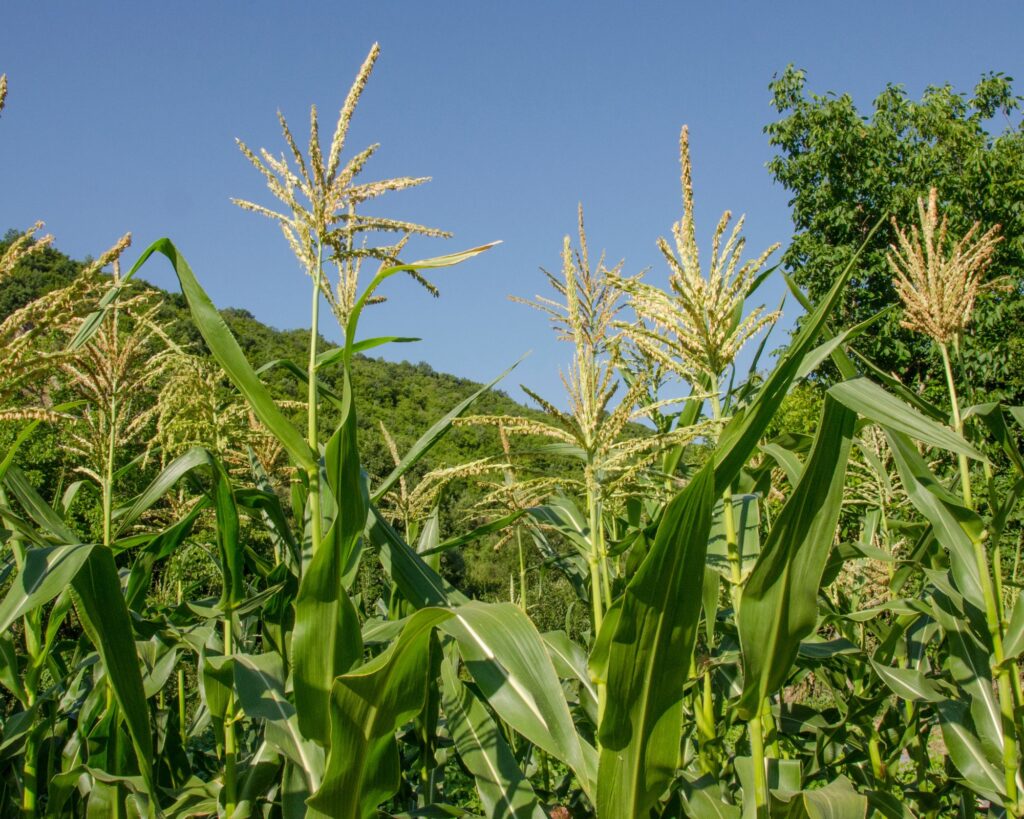Imagine stepping into your garden and being greeted by a pumpkin the size of a wheelbarrow or a sunflower towering above you like a skyscraper.
Growing giant vegetables isn’t just an exciting challenge; it’s a thrill that brings the magic of cultivating colossal produce right to your backyard.
These massive veggies aren’t just for show, either – they provide an incredible abundance of food, enough to feed your family or even share with the whole neighborhood.
If you’ve ever found yourself frustrated with small yields or dreaming of a garden that truly stands out, then it’s time to take things to the next level.
Ready to explore the world of supersized harvests? Here are 16 giant vegetable varieties that will turn your garden into a powerhouse of production.
1. Giant Pumpkins (Cucurbita maxima)
When it comes to giant vegetables, pumpkins steal the show! Giant pumpkin varieties, such as ‘Atlantic Giant’ and ‘Big Max,’ are known to grow to incredible sizes.
With the right conditions, these pumpkins can weigh over 1,000 pounds.
To achieve these impressive sizes, make sure to give them plenty of water, fertile soil, and enough space to spread out. Providing a steady supply of organic matter and monitoring for pests is also crucial.
Growing Tip: Start seeds indoors a few weeks before the last frost, and transplant them into rich, well-drained soil when temperatures warm up.
2. Colossal Cabbage (Brassica oleracea var. capitata)
‘Giant Exhibition’ and ‘O-S Cross’ are among the cabbage varieties known for their massive heads, sometimes exceeding 50 pounds!
These cabbages not only give an incredible yield but also add a stunning visual element to your garden.
They require a long growing season and plenty of room, so plant them early and space them generously.
Growing Tip: Keep cabbages well-watered and use mulch to retain soil moisture, especially during hot weather.
3. Mammoth Sunflower (Helianthus annuus)
While sunflowers aren’t technically a vegetable, they deserve a spot on this list for their ability to produce enormous, edible seed heads.
Varieties like ‘Mammoth Russian’ can grow up to 12 feet tall, with heads reaching up to 20 inches in diameter.
The seeds are not only nutritious but also make an excellent snack.
Growing Tip: Plant sunflowers in full sun and provide ample water during the growing season. Support their stems with stakes to prevent them from toppling over in strong winds.
4. Giant Tomatoes (Solanum lycopersicum)
‘Beefsteak’ and ‘Big Zac’ tomatoes are popular varieties for gardeners aiming for giant fruits. These tomatoes can weigh over 3 pounds each!
They require sturdy support due to their size and weight, so be sure to use a robust trellis or cage.
Growing Tip: Prune the plant to a single or double stem to focus the plant’s energy on producing fewer but larger fruits.
5. Elephant Garlic (Allium ampeloprasum)
Elephant garlic is technically more closely related to leeks than true garlic, but it earns its place for producing massive bulbs.
A single clove can grow into a softball-sized bulb weighing over a pound. The flavor is milder than typical garlic, making it versatile in the kitchen.
Growing Tip: Plant in the fall for a summer harvest, and be patient – elephant garlic takes longer to mature than regular garlic.
6. Monster Carrots (Daucus carota subsp. sativus)
The ‘Yellowstone’ and ‘Red Giant’ varieties can grow to be over 12 inches long! These giant carrots are not only impressive but also have a sweet and robust flavor.
Carrots prefer loose, sandy soil, so ensure your soil is well-prepared for their deep growth.
Growing Tip: Thin seedlings to provide ample space for the roots to grow straight and long.
7. Giant Kohlrabi (Brassica oleracea var. gongylodes)
‘Kossak’ kohlrabi can reach the size of a bowling ball while maintaining a crisp texture and sweet flavor.
Unlike some other vegetables, giant kohlrabi varieties retain their tenderness and taste even as they grow larger.
Growing Tip: Provide consistent watering and rich soil to promote steady growth.
8. Jumbo Onions (Allium cepa)
Onions like the ‘Ailsa Craig’ and ‘Kelsae’ varieties are famous for their colossal size, often reaching up to 5 pounds.
To grow these monsters, start seeds indoors and transplant them to the garden after the last frost.
Growing Tip: Onions are heavy feeders, so ensure your soil is well-amended with compost or a balanced fertilizer.
9. Giant Bell Peppers (Capsicum annuum)
Varieties like ‘Giant Marconi’ and ‘Big Bertha’ produce enormous peppers, sometimes over a foot long.
These sweet, crunchy bell peppers provide a bountiful harvest for salads, stir-fries, and more.
Growing Tip: Use mulch to keep the soil consistently moist, and provide support as the fruits grow heavy.
10. King Zucchini (Cucurbita pepo)
Zucchinis like ‘Ronde de Nice’ and ‘Black Beauty’ can grow to enormous sizes, especially if left on the vine for longer.
However, even when harvested smaller, they provide a plentiful and continuous harvest throughout the growing season.
Growing Tip: Harvest young for the best flavor and texture, but if you want a giant zucchini, let it grow until it reaches a hefty size.
11. Giant Cauliflower (Brassica oleracea var. botrytis)
‘Giant of Naples’ and ‘Alcala’ are varieties known for their large, compact heads.
They require plenty of space and a cool growing season to thrive.
Growing Tip: Provide consistent moisture and protect the developing heads from the sun with leaves to keep them tender.
12. Mammoth Beets (Beta vulgaris)
‘Red Mammoth’ beets can grow to be several pounds in weight while still retaining a sweet flavor.
Giant beets need deep, loose soil and a long growing season to reach their full potential.
Growing Tip: Thin seedlings to at least 4 inches apart to allow enough room for the roots to expand.
13. Giant Winter Squash (Cucurbita maxima)
‘Blue Hubbard’ and ‘Big Max’ squash varieties can grow to over 30 pounds each!
These giant winter squashes have a thick skin that allows for long storage, making them great for winter meals.
Growing Tip: Plant in rich soil and provide plenty of water. Prune some vines to encourage the growth of fewer but larger squash.
14. Giant Cucumbers (Cucumis sativus)
‘Japanese Long’ and ‘Marketmore 97’ are varieties known for producing massive cucumbers, sometimes over a foot long.
These giants have a crisp, refreshing taste that is perfect for salads, pickles, and more.
Growing Tip: Provide a trellis for vertical growth to keep fruits off the ground and prevent rot.
15. Giant Radishes (Raphanus sativus)
The ‘Sakurajima’ radish can grow to the size of a basketball! These giant radishes have a milder taste than smaller varieties and are excellent in salads, stir-fries, or pickles.
Growing Tip: Keep the soil moist and thin seedlings early to ensure proper growth.
16. Giant Sweet Corn (Zea mays)
Varieties like ‘Giant White Corn’ and ‘Mammoth Corn’ can grow up to 12 feet tall and produce ears over a foot long.
These towering plants make a striking addition to the garden and provide an abundance of kernels for cooking, grilling, or freezing.
Growing Tip: Plant in blocks to ensure proper pollination and give each plant plenty of space to develop fully.
Growing giant vegetables is not only fun but also a great way to maximize your garden’s productivity.
Whether you’re aiming to break a record or just want to feed your family with homegrown food, these giant vegetables are a fantastic choice for any garden.
So, why not give them a try this season and see just how big your harvest can grow?
